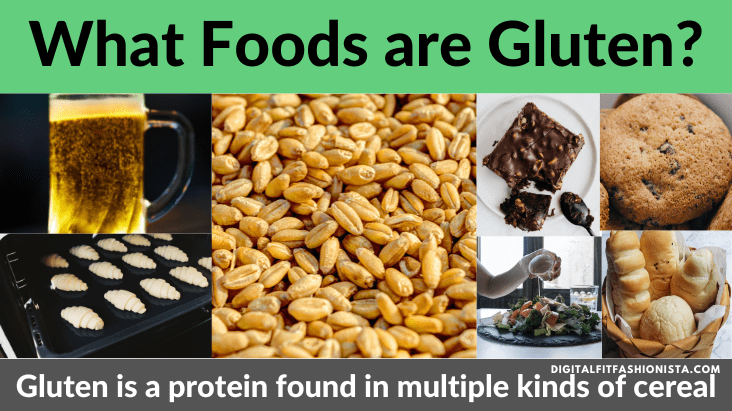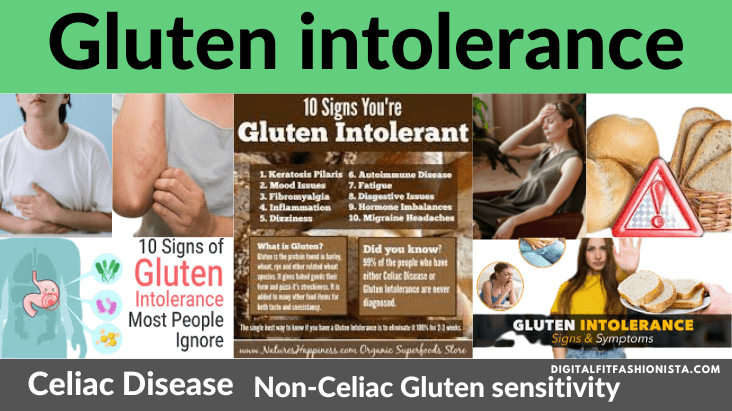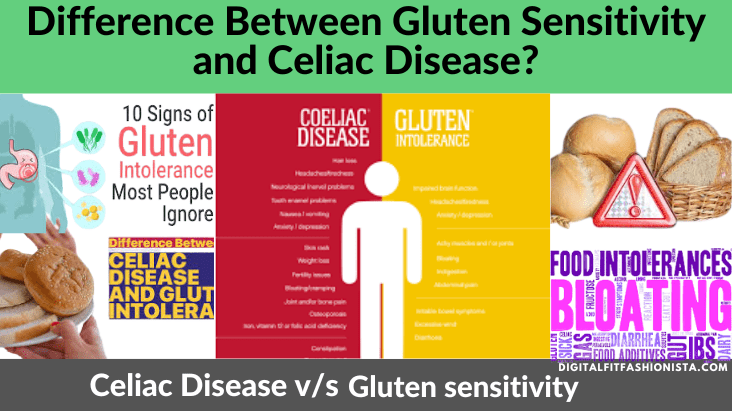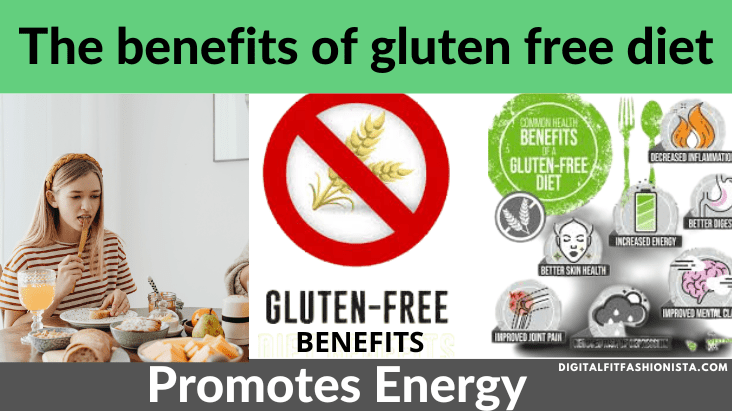What Foods are Gluten? Gluten is a protein found in multiple kinds of cereal. Such as Wheat, Barley, and Rye. It is also found in some foods like bread, pasta, and pizza.
Go through this blog post to get insight into Gluten and also what foods gluten free. Grain containing an object, especially in wheat, is liable for dough’s pliable consistency. Gluten is a protein found in multiple kinds of cereal.
Such as Wheat, Barley, and Rye. It is also found in some foods like bread, pasta, and pizza. Gluten cannot deliver essential nutrients to our bodies. Individuals with celiac disease have an unsusceptible response alleviated by ingesting Gluten.
So, to avoid such triggering by Gluten, we prerequisite that, What Foods are Gluten? Below, we are discussing that closely.

What Foods are Gluten? Podcast
You may also like:
The foods which contain Gluten are as follows –
Food types containing Gluten | Foods |
| Grains/Cereals | Wheat Wheat varieties: Semolina, Wheat starch, durum, couscous, Farina, wheat germ, and graham flour. Barley Rye Triticale |
| Bread/ Breakfast Foods/ Baked Foods | Bread: Pittas, rolls, biscuits, cornbread, flatbread, naan. Breakfast foods: Pancake, French toast, Granola. Baked Foods: Cakes, Cookies, Brownies, Muffins, Donuts, and Pies. |
| Pasta/Noodle Family | Noodles: Ramen, Egg, soba. Pastas: Spaghetti, lasagna, ravioli. |
| Meal Enhancer | Soups: Some soup mixes. Sauces: Soy sauce, sauces, and soups, that are made with flour. Condiments: Malt vinegar, Salad dressing. |
| Beverages | Beer Brewer’s yeast |
Therefore, above is the varieties of foods that contain Gluten. We should avoid Gluten-containing foods. Now, we will discuss what foods Gluten free.
What foods gluten free
Previously, we confabulated that What Foods are Gluten? Different types of grains and foods are available which are Gluten free. Gluten-free foods or gluten-free diets deliver us nutritional benefits. So, we must know what are gluten-free grains or foods so that we can be benefitted.
Gluten-Free Cereals
- Rice
- Millet
- Oats(purchase the oat which is labeled as “gluten-free”)
- Quinoa
- Corn
- Cassava
- Buckwheat
- Potatoes or potato flour

Gluten-Free Fruits and Vegetables
Naturally grown all fresh fruits and vegetables are gluten-free. But, if you are buying packaged fruits and vegetables from the market, then must look at the label. Only buy “Gluten-free” labeled fruits and vegetables. To be sure, check the ingredient list on the package.
Natural Gluten-Free Proteins
- Red-Meat
- Poultry
- Tofu
- Seeds
- Beans
- Seafood
- Nuts
Gluten-free Sauces and condiments
- Mayonnaise: Before buying must check the ingredients list.
- Mustard: Check the ingredients list before buying.
Gluten-free sweets
- Chocolates
- Hard candies
- Ice cream, Frozen yogurt
Gluten-free Beverages
- Tea and Coffee
- Juices
- Sodas or sports drinks
So, here is the list of gluten-free foods, grains, fruits, and vegetables. To get all essential nutrients we must include these in our diet list.
You may also like:
Why is gluten bad for your body?
From the above, we learned about safe gluten-free foods. Now, we get to know Why is gluten bad for your body? There are some reasons behind, gluten is called bad or unhealthy for our body.
When we eat gluten-containing food intestinal deterioration is activated by gluten. It induces gastrointestinal signs like gas, bloating, and erratic bowel motions.
Besides, it also causes headaches, fatigue, lack of concentration, and malnutrition. Gluten foods inhibit the body to absorb, vitamins and minerals. For all these reasons, doctors and health experts recommend avoiding gluten-containing foods.
Gluten intolerance
Not everyone is gluten intolerant. Most people can tolerate gluten-containing foods. Their health does not react after consuming gluten-containing foods.
But, few people are gluten intolerant. Due to some health conditions, their health reacts to gluten-containing foods. The health conditions include- Celiac diseases, Gluten sensitivity, wheat allergy, and, some other diseases.

Celiac Disease
Celiac disease is also called coeliac disease. Celiac disease is a chronic digestive and immune disorder. The disease harms the small intestine.
It is aggravated by ingesting gluten-containing foods. The ailment can lead to enduring digestive issues. It also inhibits the body to get all the significant nutrients from food. Some common symptoms of Celiac disease are-
- Diarrhea
- Gas, Bloating
- Abdominal pain
- Nausea
- Vomiting
- Constipation
- Fatigue
- Unexplained Weight loss
Sometimes some people do not complain of any symptoms of celiac disease. That is the reason, Doctors find it hard to diagnose. Research shows that 80% of people don’t know how they had affected by it.
Non-Celiac Gluten sensitivity
Gluten Sensitivity is also known as gluten sensitivity or gluten intolerance. When you are suffering from signs that appear connected to gluten, it may be feasible that you have non-celiac gluten sensitivity.
Researchers don’t have the exact estimate of people, suffering from the non-celiac disease. But, they have some estimate that is in the range of 0.5–13%.
Symptoms of Gluten sensitivity are-
- Diarrhea
- Depression
- Fatigue
- Abdominal Pain
Wheat allergy
Wheat allergy is an allergic reaction to wheat-containing foods. These symptoms can be provoked by consuming wheat. In some special circumstances, the allergic reaction is triggered by inhaling wheat flour.
Medication is needed when the allergic reaction is triggered. Wheat allergy often is complicated by the celiac condition. But both conditions are different.
A wheat allergy ensues when your body assembles antibodies to proteins located in wheat. Whereas, in celiac disease, a typical protein in wheat, that is gluten generates an additional sort of weird immune system reaction.
Experts recommend that a gluten-free diet is safe for wheat-allergic persons. Common symptoms of wheat allergy are-
- Itching
- Swelling
- Hives
- Headaches
- Nasal congestion
- Problem in Breathing
So, here we discussed diseases that come from gluten intolerance. Now, we move to the topic of- Difference Between Gluten Sensitivity and Celiac Disease.
Difference Between Gluten Sensitivity and Celiac Disease?
Gluten sensitivity symptoms are quite the same as the symptoms of celiac disease. But both conditions are not the same. Celiac disease is an autoimmune disorder that causes digestive tract discomforts or issues.
Celiac disease is a genetic disorder. But, Gluten sensitivity is not a genetic disorder. Individuals with gluten intolerance usually find comfort from their signs by maintaining a gluten-free diet.

Celiac disease is interpreted by a blood test or biopsy. Gluten sensitivity is diagnosed by ruling out celiac disease and wheat allergy by doing a blood test.
Research shows that 38% of the population carries the genetic disorder celiac disease. Whereas, no genetic components were found in the case of gluten sensitivity.
Symptoms of Celiac disease are- Diarrhea, abdominal pain, fatigue, and sometimes anemia. Symptoms of gluten sensitivity are related to the digestive tract. Like- gas, bloating, abdominal pain, bloating, and the problem with bowel movements.
Therefore, these are the main differences between Gluten sensitivity and Celiac disease. There is a thin line of differences between the two.
Gluten-free Diet
A readymade food that doesn’t contain gluten is called Gluten-free Diet.
During production, the food has not been cross-defile with gluten-containing components.
What can you eat on a gluten-free diet?
On a gluten-free diet, you can eat
Allowed Fresh Foods
- Fresh fruits and vegetables
- Nuts, Beans, Legumes
- Eggs
- Nonprocessed fish and meat
- Low-fat dairy products

Gluten-free Grains
- Rice
- Quinoa
- Corn
- Millet
- Soy
- Amaranth
- Buckwheat
- Gluten-free flour
- Oats: Naturally, oats are gluten-free. But, it may be processed during manufacturing wheat, barley, etc. So, must check before buying oats. Double-check if it is labeled as gluten-free then it is safe for celiac disease or wheat allergy people.
You may also Like:
- Positive Parenting for Military Families: 21 Ultimate Guide
- Weight loss through yoga morning ritual: 21 Ultimate Strategies
- Danielle rose Russel Weight Loss
- Can Dogs eat Avocado Flesh?
Foods to Double-Check before buying
Fruits and Vegetables
- Canned or Processed fruits and vegetables: Canned or Processed fruits and vegetables. These may be canned or processed with condiments that include gluten. Fruits and vegetables canned with water or natural juices are probably gluten-free.
- Frozen fruits and vegetables: Frozen fruits and vegetables which are flavored on the market may contain gluten ingredients. So, go with frozen types which are typically gluten-free.
- Dry fruits: Buy only naturally sweetened dry fruits which are gluten-free. Some dry fruits are packed with added sugar. They may contain gluten.
Proteins
- Avoid or double-check processed meat, like, sausage, bacon, hot dog, etc. These contain gluten ingredients.
- Cut off Ready-to-eat proteins or meat or check before buying
- For a protein that contains sausages or seasonings check carefully the ingredients list.
Proteins to cut-off
- Breaded poultry or fish
- Seitan
Dairy Products
- Check carefully before purchasing milk, ice cream, and yogurt, which are flavored.
- For contaminated cheese or cheese products check the ingredients list before buying.
Dairy products to avoid
Malted milk drinks
The benefits of gluten free diet
Gluten-free diet
A gluten-free diet bans any foods that retain gluten. “Gluten is a protein naturally found in specific foodstuffs. But, it can also be mixed with foods during processing for texture,” explains Rajagopal. Gluten can be utilized as a binding ingredient and condiment.
Benefits
Promotes Energy:
Individuals with gluten intolerance often suffer from chronic exhaustion. The reason is regular ingesting of gluten included foods damage their intestines.
Due to this, their body creates resistance to absorbing iron and other nutrients from food. Thus Iron-deficiency cause. This iron insufficiency leads to anemia which results in fatigue or exhaustion.
Exchanging with a gluten-free diet will deliver your intestines an opportunity to recover. It also reforms nutrient absorption and promotes your energy levels.

Eradicates bloating:
If a person has gluten intolerance or celiac disease, then he/she may suffer from gas, or bloating after consuming any gluten consisting food.
When you switch to a gluten-free diet you can see a visible positive change in your digestive issues. You will get comfort. Your stomach will be healed by eradicating bloating, and gas through a gluten-free diet.
Decreases Headaches
Scientists and experts discovered that there is a strong connection between the brain and the gut. So, if your stomach is upset then there is a strong chance to have headaches.
Hence, if a person with celiac disease or gluten intolerance eats gluten foods they may have headaches. So, if they start a gluten-free diet their headaches will decrease.
Eases joint pain
Individuals with celiac and gluten intolerance are interconnected with the gastrointestinal tract. In the long run, this issue causes joint pain, knee pain, back pain, and wrist pain. So, joint pain eases after switching to the gluten-free diet.
Diminishes depression
Gluten-consisting foods alleviate depression. Especially persons with celiac disease and gluten intolerance suffers from depression more after eating gluten foods. A gluten-free diet helps to diminish depression.
Enhances bone wellness
We discussed before that celiac diseases and gluten intolerance inhibit the absorption of essential nutrients from food. So, malnutrition leads to calcium deficiency and it results in bone diseases like osteoporosis, arthritis, etc. A gluten-free diet enhances bone wellness.
Skin texture Improves
People who are suffering from celiac disease or gluten intolerance have a higher chance to get skin diseases. Like- eczema, itching, rashes, etc. So, if they switch to a gluten-free diet to improve their skin health and get relief from skin diseases.
Improve hair growth
Malnutrition due to celiac disease and gluten intolerance leads to excessive hair loss. Hair volume decreases. When the person begins a gluten-free diet hair growth improves. The diet improves hair volume and texture also.
Decreases lactose tolerance
When a person suffers from celiac disease or gluten intolerance, they may have intestinal inflammation. The inflammation generates secondary lactose intolerance. So, if they commence a gluten-free diet the symptoms of lactose intolerance decrease slowly but effectively.
Reduces the Threat of More Autoimmune Disorders
Individuals with celiac disease or gluten intolerance are often attacked by various autoimmune disorders. If they switch to a gluten-free diet, then the threat of more autoimmune disorders reduce.
So, these are the main benefits of a Gluten-free diet.
Disadvantages of Gluten free diet
Though a gluten-free diet has multi-benefits it has some disadvantages also. Here, we are discussing the risks of a gluten-free diet. Let us check those risks below-
Scarcity of Fiber
America, as a whole, has fiber trouble. Only about 5% of the US inhabitants are acquiring sufficient fiber to fulfill the suggested policies for fiber consumption. A gluten-free diet does not contain enough fiber.
Malnutrition
We all know that gluten foods are mostly unhealthy. But, there are some foods that are healthy and nutritious for our health. Like fiber deficiencies, people who follow a gluten-free diet also suffer from vitamin and mineral deficiencies.
A gluten-free diet lacks vitamin B like- folic acid, riboflavin, niacin, and thiamin. Besides, it causes a deficiency of iron, calcium, zinc, etc. This may lead to a high risk of health and malnutrition.
Type 2 diabetes risk
The research was held on a few people. One group started a gluten foods diet and another group followed a gluten-free diet. The research showed that gluten-free diet groups people mostly diagnosed with type 2 diabetes and the other group was less developed with type 2 diabetes.
Weight Gain
It is not true that a gluten-free diet is healthy and also aids in weight loss. Some gluten-free foods like brownies and muffins are prepared with high calories and added sugar. Thus it results in weight gain.
Therefore, these are some disadvantages or risks of a Gluten-free diet. Next, we will move to who should eat a gluten-free diet.
Who should eat a gluten-free diet?
A gluten-free diet is advised, for individuals with celiac disease, gluten intolerance, or any skin disease. In spite of that, a gluten-free diet may be worthwhile for some people with irritable bowel syndrome, the neurological disorder gluten ataxia, and type 1 diabetes.
How do I get started with a gluten-free diet?
There are a few steps to follow to get started with a gluten-free diet. These are as follows-
- Understand What Foods to Include or Avoid: Firstly, understand what foods to include in your gluten-free diet and what to avoid.
- Check properly the product ingredients list: To begin a gluten-free diet, check properly the product ingredients list before buying. It must be labeled as “gluten-free”.
- Investigate different gluten-free foods: Keep a gluten-free food list with you. There are varieties of gluten-free grains and gluten-free foods. Explore one by one slowly.
- Gluten-free grains are- Rice, quinoa, millet, and unprocessed oats. Gluten-free foods are- fresh fruits and vegetables, eggs, unprocessed meat, and fish.
The Bottom Line
So, now we are at the bottom line of this article. In this article, we closely discussed What Foods are Gluten? and what foods gluten free. Besides, we have enumerated about Gluten-Free Diet, What can you eat on a gluten-free diet? and The benefits of gluten free diet.
In spite of that, we shared Why is gluten bad for your body, the Difference Between Gluten Sensitivity and Celiac Disease? and the disadvantages or risks of a gluten-free diet. We hope people who want to start a gluten-free diet or who have celiac or gluten intolerance will be beneficial from this. If you liked the article feel free to share it with your friends and family.
FAQs
What foods are high in gluten?
Bread(unless labeled as “gluten-free”), Pasta, Baked foods, Grains, Soup, and Beer are high in Gluten.
What foods do you avoid on a gluten-free diet?
When you are following a gluten-free diet, you must avoid wheat, barley, and rye as these contain high amounts of gluten.
Are eggs gluten?
Eggs are naturally gluten-free. Regardless, eggs are usually at high risk for cross-contact due to the method in which they are prepared.
Does a potato have gluten?
Gluten is a type of protein found in wheat, rye, barley, and other grains. As potatoes are grown naturally, they are Gluten-Free. Only potato flour contains gluten.
What are the worst foods for gluten?
The worst foods for gluten are- Beer, Baked foods, cakes, wheat, Bread, sauces, etc.
Can gluten cause thyroid problems?
Multiple studies demonstrate a strong association between gluten intolerance and Hashimoto’s disease. It is an autoimmune disorder. It attacks the thyroid gland and causes hypothyroidism
- What skincare routine is best for Combination skin - July 18, 2024
- Best Indoor Plants 2024 - June 29, 2024
- Travel Essentials for Women 2024 - June 6, 2024


